

Damion Smy
GWM Cannon Alpha ute, Tank 300 HEV and Tank 500 recalled
13 Hours Ago
Simon Christie challenges the Tank 300 to some proper off-road testing, too see if the Chinese can really take on 4x4 stalwarts.
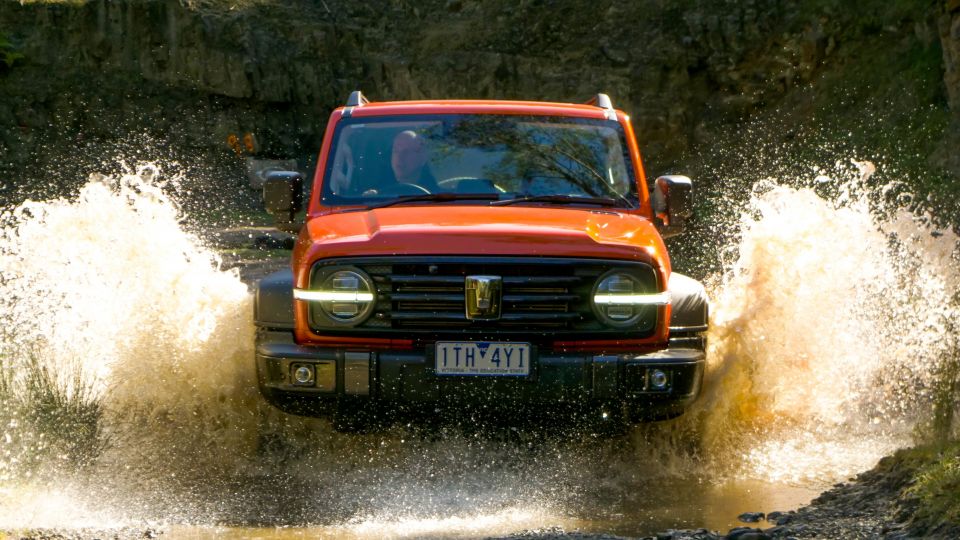
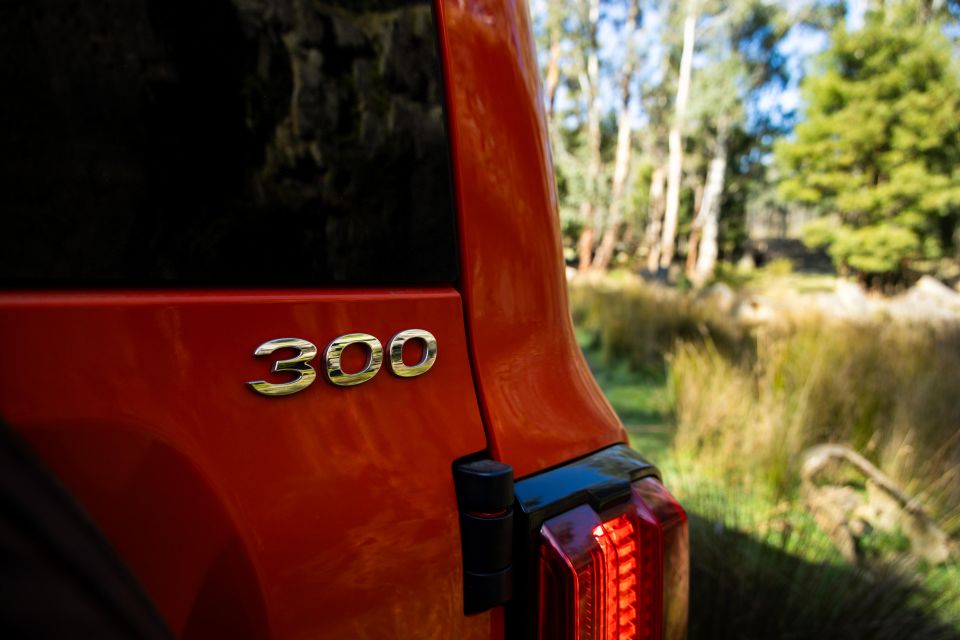

Quickly see how this car stacks up against its competition. Select any benchmark to see more details.
Where expert car reviews meet expert car buying – CarExpert gives you trusted advice, personalised service and real savings on your next new car.
This vehicle slipped into my hands with great anticipation – so what is all the fuss about?

The 2023 GWM Tank 300 is made in China by GWM (previously known as Great Wall Motors). There is currently considerable media activity and community concerns surrounding China, Chinese Companies and the CCP, all of which is playing a role in the perception and welcoming of this vehicle.
GWM had a less than favourable reputation here in Australia from the early offerings we were given. But the company has grown, improved, rebranded and is now well established as a considerable force within the global automotive manufacturing scene.
Some would even say that GWM is currently the biggest vehicle manufacturer in the world. Now, it has its sights set firmly on the 4×4 market. GWM has an established heritage in this arena (at leas overseas), and have a very diverse set of 4×4 options already in production.
On approaching the GWM Tank 300, it’s modern, yet boxy silhouette conjures images of the Ford Bronco and Suzuki Jimny, with some distinct styling cues borrowed from both as well as other iconic off-roaders like the Mercedes-Benz G-Wagen.
But it does it in a way that keeps it modern, fresh and different enough to have its own identity. The doors, trim, interior layout and general finish look, feel and sound good – yes, I gave everything a good whack to see how it would shake, rattle or vibrate, and it didn’t.
The build quality is excellent, the styling is retro yet modern, the materials look and feel high quality, and it is all well matched, comfortable and practical. The cabin is welcoming, and whilst not over the top it’s luxurious enough to represent great value for money.
The seats look and feel good, and although only mildly bolstered they provide a stable base for the driver and other occupants. So before we even start driving, the Tank 300 has earned itself two big ticks for its overall looks and interior, and a big thumbs up for perceived build quality.
Along city streets and the freeway the Tank 300 is a pleasure to drive. It doesn’t offer outstanding performance, but it does what it needs to do with ease. The indicator is loud, clunky and takes a little getting used to, but everything else is intuitive and unobtrusive.
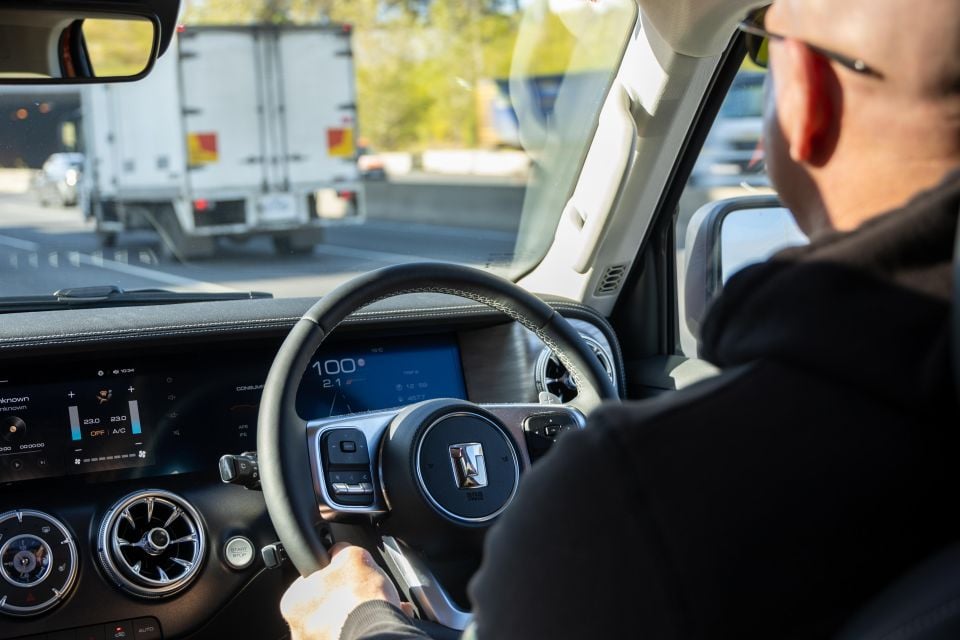
Well… almost everything. Like many new vehicles, the Tank 300 is laced with electronic safety aids and driver assist functions that for the most part leave a lot to be desired. With due respect, they are reasonably mild and can be tolerated, but it’s the Emergency Lane Keeping (ELK) that causes common frustration, especially with its propensity to continue working when you hit dirt roads.
Like many of these functions it should be automatically disabled once you engage 4×4, which is an oversight on GWM’s part. Fortunately it can be easily turned off, and it’s absolutely made up for by the vehicle’s slow speed proximity and surround camera systems which are excellent (and fun to play with).
Transitioning onto dirt, the 4×4 selector is easy to find and clearly labelled. 4H can be selected on the fly and there’s a telltale click as the transfer case engages the front axle with confidence, and a light on the dash to confirm the switch.
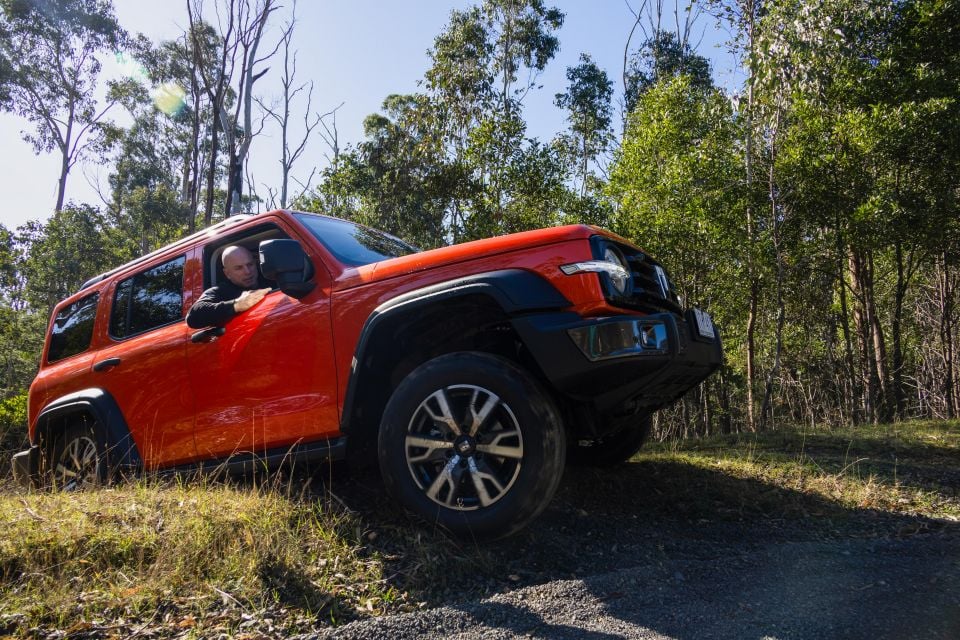
At speed on dirt, the little Tank 300 feels secure, stable and in control. It is not exhilarating, but it’s satisfying and fun to drive. Unlike some reviews from other journalists – and this is possibly because I am just more acquainted with 4x4s – there is no excessive body roll and the handling is impressive considering the limitations of the factory suspension and highway tyres.
I had no issues throwing it into corners at speed. It was, however, pretty poor at absorbing heavier hits from potholes that sent shudders through the vehicle. Possibly under-sprung and over-bump stopped (too stiff). This is one area where aftermarket suspension would make some clear improvements.
As we hit the harder stuff, low-range (4L) is selected with no fuss at all, and the independent front suspension (IFS) setup quickly runs out of travel. It’s not hard to lift a wheel, a byproduct of IFS, but with the aid of front and rear lockers, the Tank 300 simply soldiers on.
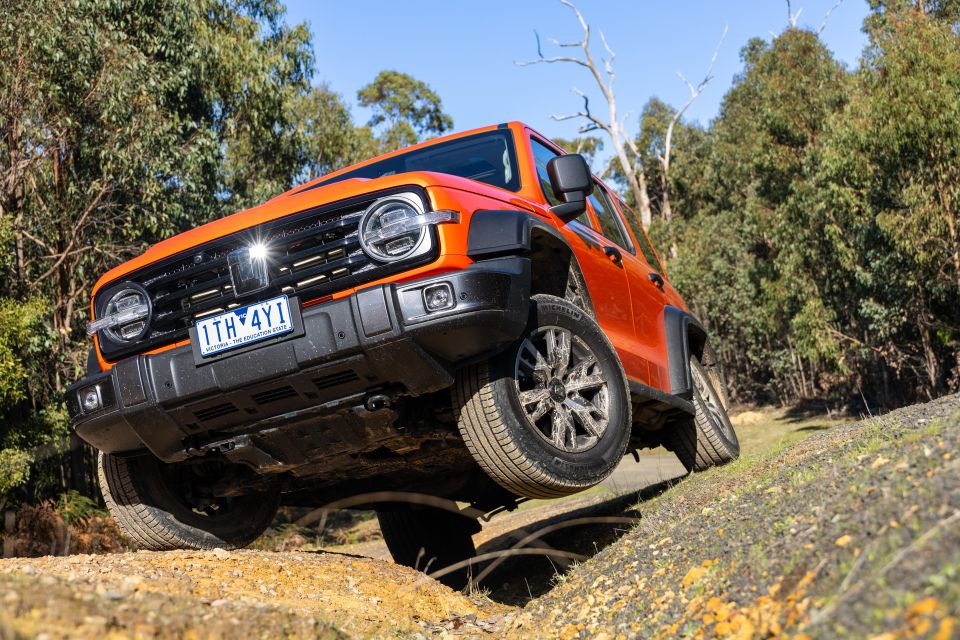
It’s not so much that the Tank 300’s IFS is bad, as it’s no different to anything else on the market. But, the addition of the front locker in the flagship Tank 300 Ultra ensures premium performance with maximised traction across all four wheels.
There is nothing special or unique about the Tank 300’s off-road performance except for two key points relating to the delivery of such sound off-road ability.
First is the quality of the build and the overall design, that allows it to be just as good an off roader as any other better-known 4x4s with similar specs.

And, second is the fact that it does it at a lower price point, and in some cases at a considerably lower price point, making it quite a bargain.
So if capability and build quality are all good, what’s holding the Tank 300 back?
The Tank 300 is powered by a 2.0-litre turbocharged four-cylinder petrol engine with no diesel offering (for Australia at least) on the cards, though a much anticipated hybrid is on the way.
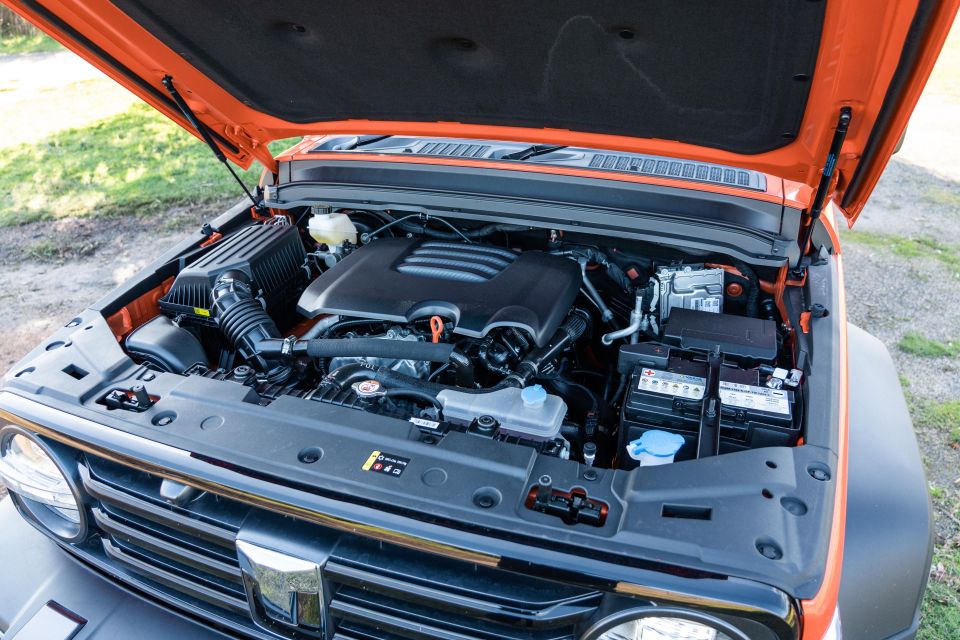
The 2.0T puts out 167kW and 380Nm; which for a relatively light 4×4 makes it a little snappier off the line than most dual-cab utes.
As mentioned above, it’s no rocket but also no slouch, and unlike vehicles like the Mazda BT-50 and Isuzu D-Max utes, it is more driveable and definitely a tad more fun on- and off-road.
The engine is backed by a smooth eight-speed automatic transmission that offers excellent ratios and a good balance between an equivalent six-speed that may suffer from turbo lag and powerband weak points, and a 10-speed that could be continually hunting for the right ratio.
Fuel economy is not the best, with a quoted figure of 9.5L/100km. But again, if you’re a keen driver, that is compensated for by the driveability and fun factor.
In my mind, it’s a more reliable and better suited package for touring, towing and off roading. An old-school dual-speed transfer case does the heavy lifting for 4×4 work, and Eaton provides the locking differential units – another sign of the quality of the build.
Overall it’s a package that works well and the combo feels sharp, clean and confident on and off road.
In the Chinese market the Tank 300 has been extremely successful on the sales charts, and therefore plenty of modifications are available. Social media videos abound on the build, upgrades and outright extremes of available upgrades, plus the number of vehicles filmed off-road are astounding.

What this vehicle represents and is doing for the 4×4 movement worldwide should not be underestimated, but that is a whole other article.
But while there are a plethora of accessories available for the Tank 300 in China, there is virtually nothing available here in Australia… yet. That’s a shame, but it will change quickly as the aftermarket industry get their heads around the potential of this vehicle.
Just like any new factory 4×4, the Tank 300 and its owners will benefit greatly from aftermarket accessories. Suspension kits, like those in development by the iconic Australian brand Tough Dog, will provide enhanced performance for steering, braking, cornering and load carrying, whilst also improving off-road clearance, comfort and articulation.
Correctly crash-tested and ADR-compliant bar work from industry leaders like ARB will provide protection and mounting points for winches, antennas and driving lights.
Engine performance will be enhanced for greater power and economy, but the biggest and best changes will be with the much-needed GVM and GCM upgrades that Aussies need to legally deal with the Tank 300’s mediocre load and towing capacities from factory – although the easier solution is that GWM takes the feedback and fixes this in-house.
The Tank 300 is undeniably a winner for me. It has fulfilled my expectations with only three disappointments – the low towing capacity, limited payload, and the lack of a diesel option in Australia.
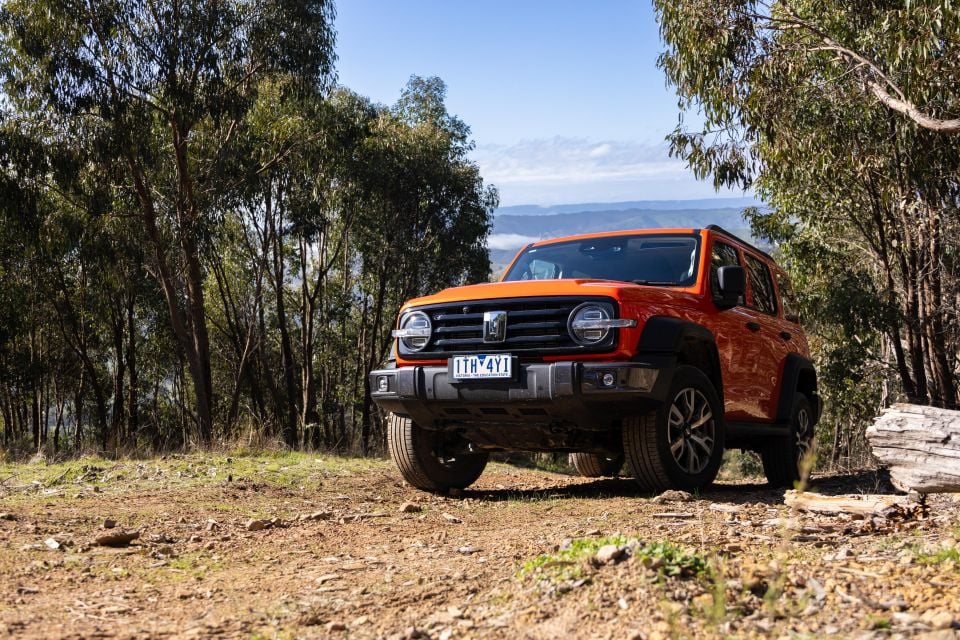
Whilst the petrol-electric Tank 300 Hybrid will offer something unique to our market; I think GWM Australia would be better off fixing the other two issues, get some runs on the board in regards to long-term tests, and address concerns of lack of parts availability.
Do that, and this vehicle is a serious contender to take on the likes of the Toyota Prado for much less money, whilst offering a substantial upgrade to those who want a more space and performance than a Suzuki Jimny.
GWM has set a new standard with its Ute, and the Tank 300 has gone one further to squash any concerns over build quality and off-road performance.
The Tank 300 has huge potential, and if Aussies give it a go they will not be disappointed with the features and performance for the spend. Plus, the bigger Tank 500 is on the way and the Japanese manufacturers are clearly on notice with their continual price hikes!
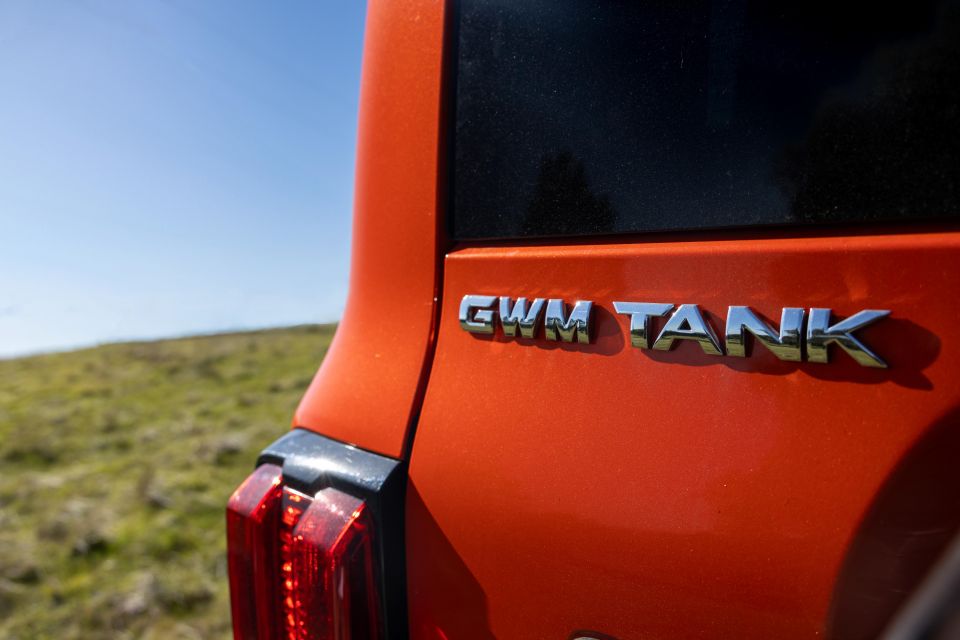
Click the images to the full gallery
MORE: Everything GWM Tank 300
Where expert car reviews meet expert car buying – CarExpert gives you trusted advice, personalised service and real savings on your next new car.


Damion Smy
13 Hours Ago


CarExpert.com.au
5 Days Ago


Damion Smy
5 Days Ago


Damion Smy
6 Days Ago


Josh Nevett
6 Days Ago


Max Davies
6 Days Ago